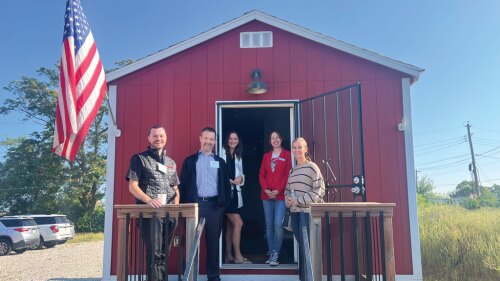New York City’s Climate Mobilization Act has won applause from sustainability advocates and triggered concern from some real estate groups about the cost of fines for noncompliance. But the fines are not generally onerous for most building owners, and the energy efficiency benefits can save significant money over time, experts say.
Moody’s Analytics CRE analyzed the potential financial impact of Local Law 97, the act’s building emissions section. The resulting research paper, Groundbreaking NYC Climate Law Spurs Minor Credit Risk for CRE Loans, draws on New York City data on the types of fines likely to be levied, as well as Moody’s own net operating income data from commercial mortgage–backed securities properties, to estimate fines for property owners who take no mitigating measures to reduce energy usage. “For the first hurdle year, 2025, if your energy use is basically the same as it was in 2019, only about 20 percent of the buildings in New York are going to be subjected to fines,” says Kevin Fagan, senior director at Moody’s Analytics CRE. “That jumps up pretty dramatically in 2030. Eighty-two percent of buildings would be affected by then, still assuming no change in energy use. The potential fines are concentrated in some particularly high-energy-use buildings, but for the vast majority of buildings, the fines are less than $1 per square foot, a relatively minor concern.” Although Fagan thinks the law will encourage energy retrofits, “it doesn’t crush the average building owner’s net operating income if they do not.”
The business case for improving building performance is strong, says Marta Schantz, co-executive director of the ULI Randall Lewis Center for Sustainability in Real Estate. “There is a huge value to reducing your energy consumption: it lowers utility bills, and that lowers operating expenses and increases net operating income,” she says. “When you look at that with a cap rate, it increases your asset value. So even though these localities are telling buildings that they need to perform better, the value is there for the buildings to do so.”
Collaboration between the public and private sectors is key to the success of climate policies. At three City and Real Estate Sustainability workshops, ULI brought together real estate leaders and city sustainability policymakers to talk through these policies, summarized in the report Decarbonizing the Built Environment: 10 Principles for Climate Mitigation Policies. “These principles are for both the real estate sector and the public policy sector to understand the importance of collaboration, so that when these policies are enacted, they benefit both the local government and the property owners who have to comply,” Schantz says.
One challenge is that for many commercial properties, owners have no control over how tenants use energy. “We’re starting to see discussions around whether owners can pass the fine down to their tenants,” says Schantz. “There’s a real split incentive, where owners would like tenants to be more energy efficient to improve the building’s performance score, but it can be hard to justify owners paying for improvements when tenants benefit from the energy bill reductions.”
Rising energy costs may help break that logjam. “As energy prices increase, the potential savings from energy retrofits is significantly higher,” says Hewson Baltzell, president and chief operating officer of Helios Exchange. As a result, energy benchmarking regulations may spark more collaboration between owners and tenants. “The owner can say to tenants, look, I’m under regulatory pressure to do this, and you can benefit a lot by lowering your energy use. We can share the savings, if we go ahead with this retrofit, but you have to share some of those savings with us so we can afford to pay for the project.”
Local Law 97’s emissions caps become much stricter in 2030, a deadline that is not far away, Baltzell points out. “We’re working with a lender who has institutional clients, such as insurance companies, that are building a portfolio of ten-year loans,” he says. “If you have a ten-year loan, this is really important, because in 10 years, we have passed 2030. As you underwrite deals today, you better have a good idea of what you might be facing then.”
- More Resources:
- Implementing Net Zero in Commercial Real Estate
- ULI Blueprint for Green Real Estate
- Unlocking Hidden Value in Class B/C Office Buildings; Best Practices for Pursuing Low-Cost, High-Impact Energy Efficiency and Green Leasing Strategies
- Electrify: The Movement to All-Electric Real Estate
- Renewable Energy Strategies for Real Estate
- ULI Tenant Energy Optimization Program (TEOP)
- Embedding Sustainability in Real Estate Transactions






